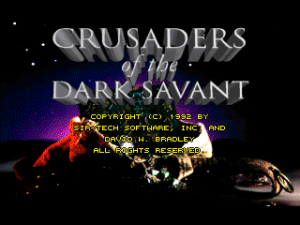Will I drive off my newly forming audience by waxing nostalgic and overanalyzing a twenty-year-old game? Or are there insights to be gleaned here about the simple interactions between story and gameplay? Consider this a beginner-level essay on game narratives.
At the start of his 1991 review of Wing Commander II: Vengeance of the Kilrathi, Alan Emrich wrote in Computer Gaming World #88:
For several months now, Wing Commander has reigned as the number-one game, as rated by this magazine’s readers. Clearly, there must be a lot “right” with this game. Even though Wing Commander is, at least at its most basic level, something of a glorified arcade game, there is also something that sets it apart. Perhaps it is the inclusion of a believable, evolving storyline, full of sympathetic comrade characters and vain, vile villains that bring a certain je ne sais pas.
He was absolutely right. Wing Commander was a fantastic game by any measure, but it was an attention to narrative that propelled it into its position as a multimedia franchise. The game would spawn numerous sequels, expansion packs, spinoffs, novels, an animated series, a feature film… some better than others, admittedly, but the quality of the core series started high and remained so.
In 1991, Origin Systems (shortly before the company’s acquisition by Electronic Arts) published Wing Commander II: Vengeance of the Kilrathi, which would prove to be one of the franchise’s high points. With the exception of adding then-rare voiceover content in a limited number of places and the sheer quantity of cinematic sequences, it is not an especially innovative game from a standpoint of storytelling mechanics. The dialogue, while more than acceptable for its time, reads as less-than-stellar today. But it is a game that excelled at the execution of its story, particularly in how its narrative elements supported and bolstered the game’s mechanics–and how the mechanics and mission design, in turn, supported its story.
It is, in short, worth examining as a case study. Let’s talk about why it worked. Continue reading →
 Image purloined from the official site.
Image purloined from the official site.
